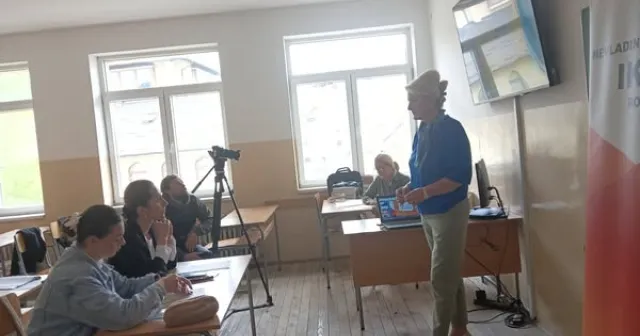Thematic week: Creative Change or What we can learn from creatives in the management of EU projects

Bringing together the best of both worlds, learning from one another, and combining the best aspects: On one hand, we have the structured world of EU project management, governed by schedules, budgets, and regulations, and on the other the flexible, unconventional – frequently almost chaotic – scene inhabited by creatives and artists. But we don’t want to promote old clichés! Artists and cultural professionals have long since needed project management skills in order to survive in the professional world. Likewise, it is becoming increasingly necessary in the management of EU projects to move past old methods and long-established processes in order to generate more effective results through innovative approaches to problem-solving and coming up with ideas. We want to do away with statements such as “…but this is how we’ve always done it and it’s always worked well..” or “why reinvent the wheel?” and expand our horizons! In the Erasmus+ project Creative Change, this is precisely the guiding principle for the project work itself and also applies to the outputs that are generated.
From a process-based orientation to people-centred work “Creative Change aims to develop the skills of adult education project staff to embrace the use of
- creative project methodologies,
- digital tools, and
- collaborative strategies
which will help them move from narrow, process-oriented work to broader people-centred, impact-oriented practices in project management,” is the mission statement defined in the project application.
All project activities in Creative Change are based on the “human-centred design” approach, a creative problem-solving method that starts with people and their desires, ideas, doubts, and so on, and ends with the creation of new solutions that are tailored to the needs of a specific target group.

In the project itself, work is focused on producing three resources in which the project partners (which include a mix of education providers and organisations from culture management and the creative industries from Denmark, Ireland, Italy, Belgium, Hungary, and Austria) transfer creative methodologies from the cultural industries to projects in adult education. To some extent, we already use certain techniques and approaches in our work. Design thinking is no longer a completely foreign concept, and the organisation of our online collaboration has developed further over the past year – albeit out of necessity – and we have become much more experienced and, above all, more willing to experiment in many areas.
We want the products developed in the Creative Change project to help project managers in the education sector as well as artists and cultural professionals to improve their skills in the application of creative and innovative project methods. We develop and provide resources that help us as project managers to make “thinking outside the box” a habit. To allow us to get past our reservations and try new things, even if it fails sometimes or requires more time. To make us challenge colleagues and project partners by encouraging them to see things from a different perspective and even take a playful approach.
Empathise – observe – engage However, it is not possible to work entirely without following certain project management principles and processes – thus, the Creative Change partners started their project work with a research phase aimed at creating the basis for IO1, “The Guide to Human-Centred Design of Adult Education Programmes”. This guide will serve as the foundation for working with the “human-centred” approach. It contains examples that show how design thinking and human-centred design can change project management and processes. In addition, the guide provides an overview of existing and proven methods and recommends special strategies for use in adult education projects.
As part of this research, we organised a focus group in July 2021, in which 22 people from EU projects in adult education as well as visual and performing artists and people from the field of culture management participated. One of the participants made a wonderful sketchnote visualising how we structured the focus group and what came out of the meeting, thus demonstrating that written notes are not the only way to document the process of generating ideas!

Image: Tanja Wehr, sketchnotelovers.de
What’s next? The work on the guide will continue into the autumn and then we will start on the second IO – the Creative Change Space. We are still working to determine what it will look like and what exactly it will offer. At this point, all we can say is the following: It will be a kind of online hub for mutual exchange, information, and the presentation of creative project management methods. Initial information about this can be found on our website: https://creative-change.eu
In addition, we hope to continuously expand our community of creatively thinking education managers, management-savvy artists, and everyone else who is interested in this topic. To this end, you can subscribe to our newsletter and join the Creative Virtual Collaboration group on LinkedIn!
Naturally, you can also write to us directly: Maren Satke, Project Coordinator, AT, die Berater®, m.satke@dieberater.com
Project website: https://creative-change.eu






Creative change
Thank you. Very interesting approach. Of course, links between professional activities, cultural activities and personal developments are essential for harmony
David LOPEZ EPALE France